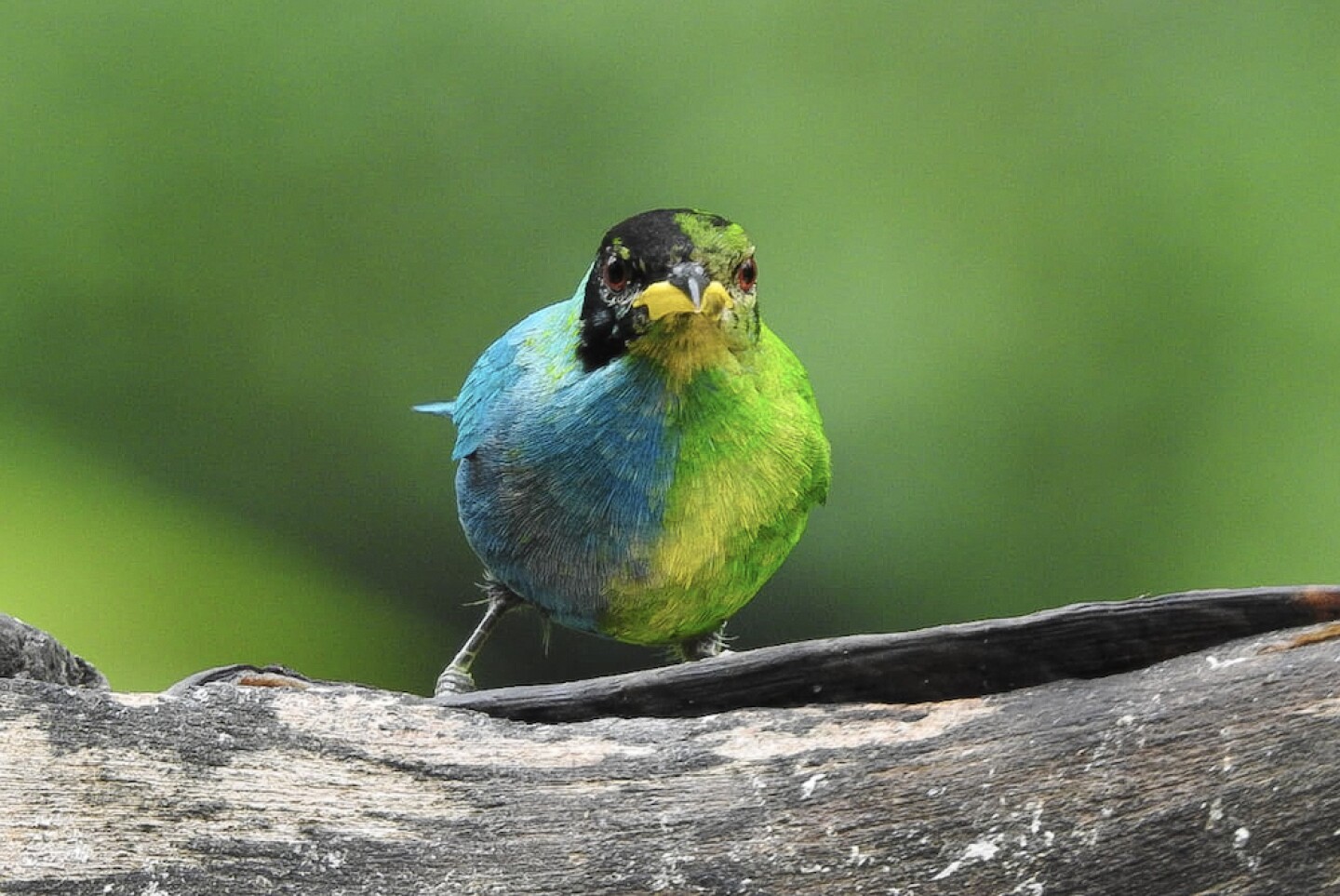Captan extraño pájaro, mitad macho y mitad hembra
En un artículo publicado en diciembre en la revista Journal of Field Ornithology, Murillo, Spencer y otros especialistas concluyeron que se trata del primer registro de doble fecundación

Handout courtesy picture released by Colombian amateur photographer John Murillo showing a Green Honeycreeper (Chlorophanes spiza) at the San Miguel Demonstration Reserve in Villamaria, a municipality in the department of Caldas, Colombia, on May 22, 2022. On the right side of its body, the bird flaunted the typical blue plumage and black head of the male Green Honeycreeper -- on the left, it was a beautiful grass green. According to experts, the specimen spotted in Colombia was a rare example of “bilateral gynandromorphy” -- a condition in which one side of an animal exhibits male characteristics and the other female. In an article published in December 2023 in the Journal of Field Ornithology, Murillo and a group of bird scientists report the first recorded observation of gynandromorphy in a living Green Honeycreeper. (Photo by John MURILLO / John MURILLO / AFP) / RESTRICTED TO EDITORIAL USE - MANDATORY CREDIT “AFP PHOTO / JHON MURILLO” - NO MARKETING - NO ADVERTISING CAMPAIGNS - DISTRIBUTED AS A SERVICE TO CLIENTS - RESTRICTED TO EDITORIAL USE - MANDATORY CREDIT “AFP PHOTO / JHON MURILLO” - NO MARKETING - NO ADVERTISING CAMPAIGNS - DISTRIBUTED AS A SERVICE TO CLIENTS /
/JOHN MURILLO/AFP
En el costado derecho tiene el plumaje azul típico de los machos y en el izquierdo el verde de las hembras: un pájaro avistado en Colombia es, según expertos, el extraño caso de un ave con características de ambos sexos.
El fotógrafo aficionado John Murillo lo observó por primera vez con su lente en 2019. El mielero verde (Chlorophanes spiza) aterrizó en un comedero para disfrutar de bananos y uvas en la Reserva Demostrativa Don Miguel, en Villamaría, un municipio del departamento de Caldas (centro-norte).

Visitante habitual de las montañas de la región cafetera de Colombia, el pájaro fue motivo de discusiones entre ornitólogos locales hasta que el biólogo neozelandés Hamish Spencer se maravilló con sus colores en una visita y empezó a estudiarlo.
En un artículo publicado en diciembre en la revista Journal of Field Ornithology, Murillo, Spencer y otros especialistas concluyeron que se trata del primer registro de doble fecundación de ginandromorfía bilateral en un mielero verde en más de 100 años.
“En las aves, se cree que el fenómeno surge como resultado de un error durante la meiosis del óvulo, con la posterior doble fertilización por espermatozoides separados”, explican en el estudio sobre una condición menos extraña en insectos y crustáceos.
También es el primer avistamiento de un individuo vivo con características de los dos sexos en esta especie, que puede llegar a medir 14 centímetros de longitud y habita desde México hasta Brasil.
Los lugareños estaban acostumbrados a ver revolotear a las hembras verdes y los machos azules, pero nunca con uno de ambos colores.
“Tuve la fortuna de que llega una especie de ave que para nosotros era muy diferente de todo lo que habíamos visto (...) mantenía un comportamiento muy extraño porque solamente entraba solo (al comedero), entonces empiezo a hacerle un seguimiento”, recuerda Murillo, de 56 años, en conversación con la AFP.
Los especialistas no auguran un futuro reproductivo para el pájaro, que según Murillo es más amistoso con los humanos que con otros ejemplares de su propia especie.
“En general evitaba a otros de su especie, y los demás también lo evitaban (...) Por lo tanto, parece poco probable que este individuo hubiera tenido alguna oportunidad de reproducirse”, concluye el estudio.
“Es único en el mundo y así se va a morir”, pronosticó.
Te puede interesar:
¿Por qué los animales caminan en círculo? Esta podría ser la explicación


